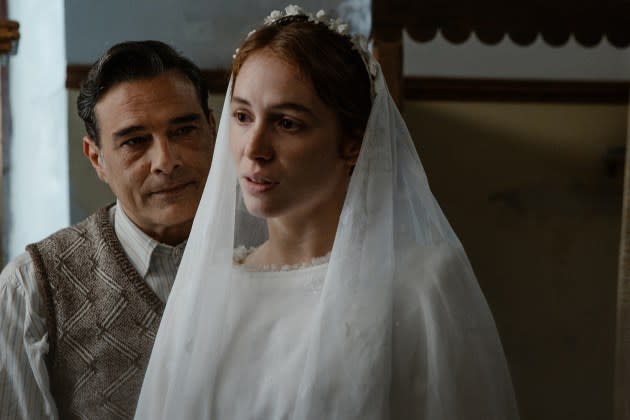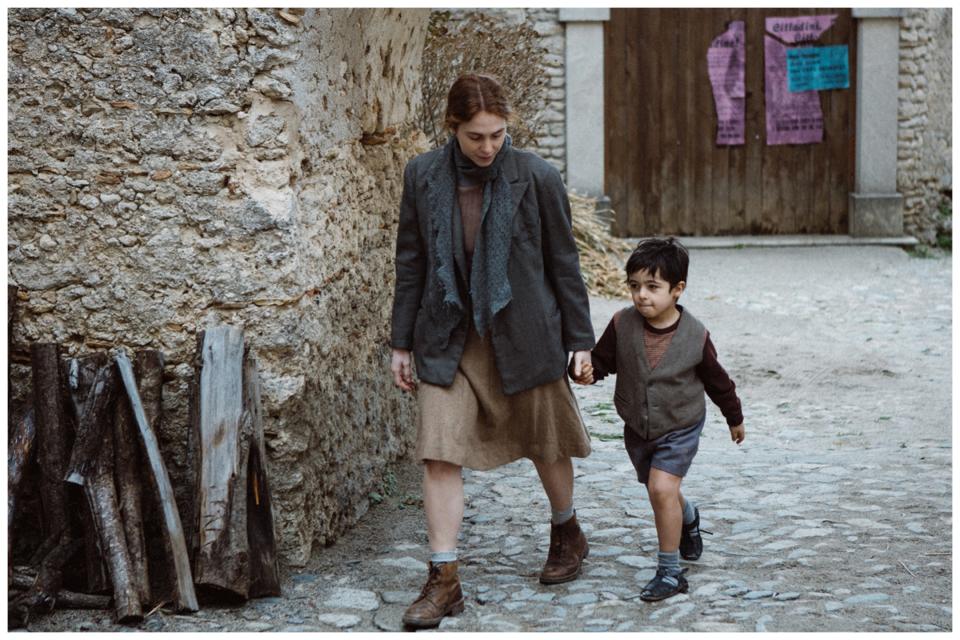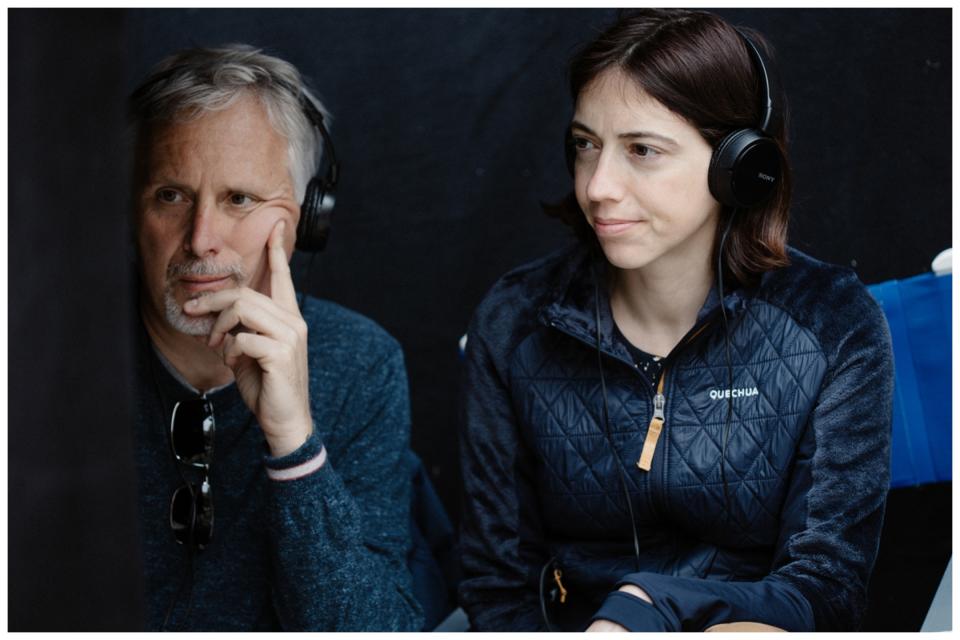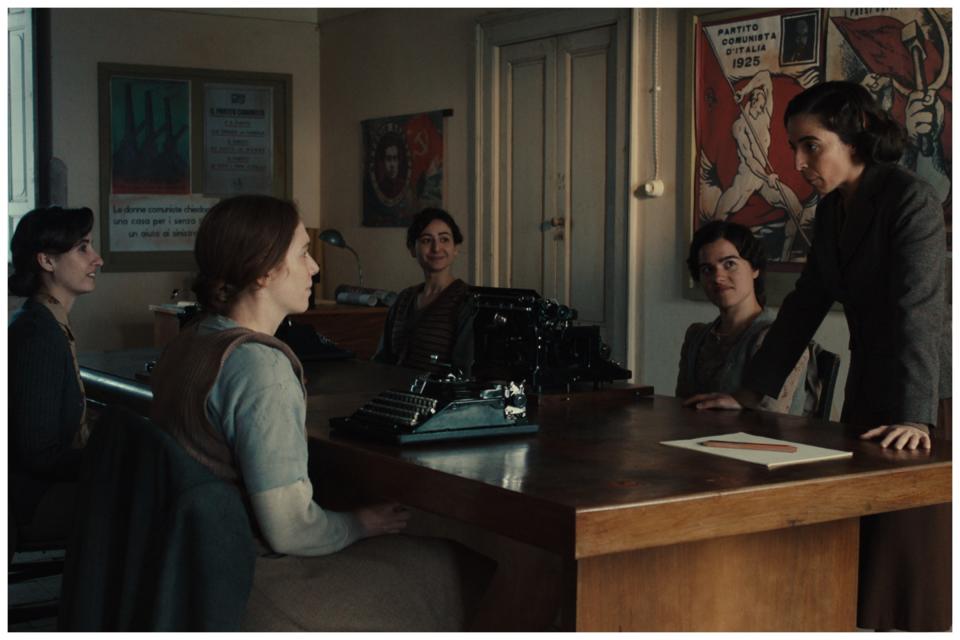‘My Place Is Here’ Directors Talk Women’s Rights, Poverty in Post-War Italy as Trailer Debuts (EXCLUSIVE)
- Oops!Something went wrong.Please try again later.

Italian period drama “My Place Is Here” is being released in Italy by Adler Ent. on May 9, and is being sold at Cannes by Beta Cinema. Variety speaks to the film’s directors, Daniela Porto and Cristiano Bortone, and debuts its trailer (below).
“My Place Is Here” is set in the years following the end of World War II. Women have just been given the vote in Italy, but in Calabria, a conservative rural region in Southern Italy, men still rule the roost.
More from Variety
LGBTQ Romantic Comedy 'Perfect Endings' Acquired by M-Appeal (EXCLUSIVE)
'Riefenstahl,' Documentary About Nazi Propagandist, Added to Beta Cinema's Cannes Slate (EXCLUSIVE)
An unmarried single mother, Marta, who is deemed to have brought shame on her family, has been promised to an older farmer as his wife. While making preparations for the wedding, Marta meets Lorenzo, the village’s openly gay wedding planner. He encourages her to broaden her horizons and take typing lessons at the local Communist Party office as a means of finding work. Here she meets Communist activist Bianca, who offers a different role-model to the down-trodden women of her village.
Ludovica Martino, best known for the Italian version of “Skam,” plays Marta, and Marco Leonardi, whose credits include “Cinema Paradiso” and “Once Upon a Time in Mexico,” plays Lorenzo.
The film is based on the novel by Porto, who adapted it for cinema with Bortone. The film’s release in Italy comes in the wake of the massive success of “There Is Still Tomorrow,” which has grossed $39 million. That film also deals with the topic of patriarchy in post-war Italy.

Porto tells Variety that both her parents came from Calabria, and she used to go there every summer as a child. The idea for the story sprung from when her mother spoke about an openly gay man in her village who helped women organize their weddings. She imagined what the relationship between one of these women and this guy would be like and from there the story started to unfold.
The film is particularly relevant now, Porto says, because of the rise of the right-wing in Italy, as well as other countries, which is threatening to force back women’s rights, in particular their access to abortion.
Another aspect of the film is its depiction of poverty and a lack of opportunity in Southern Italy in that period, when hunger was common, and illiteracy kept people from improving their chances in life. Porto conducted extensive research while writing her novel and she used photographs from the period to guide them in the choice of costumes and the overall look of the film.
This depiction of life as it was then is in contrast with the “sweetened image” of the South of Italy often seen in TV drama, Bortone says, in which it is portrayed as “romantic” and “beautiful.” He adds: “Life was really bad.”

Italians need to be reminded of how tough life was in Southern Italy and how that led to migration to the north of the country and to other countries, like the U.S., Bortone says. This is particularly relevant today when immigration is such a toxic issue in Italian politics. “We have forgotten that part of our past. It’s important to keep that emotion alive when we approach the present,” Bortone says.
Despite the negative image of the Communist Party that has come to the fore in recent decades, in the film it is seen to have attempted to “improve conditions” for the poor in Italy, Porto says. However, in terms of its treatment of women, it is shown to be little better than the right-wing parties, in that it didn’t want women to escape their oppression. Their attitude was “you can vote but remember that your position is in the family,” she says. “1946 in Italy [the year after women’s suffrage], for me, was a very important year, because there were great expectations, but many of them were not realized.”
Bortone says they tried to avoid using stereotypes in the film. In the depiction of gay characters, for example, they avoided showing gay men as being funny or flamboyant. The inspiration for the film’s depiction of Lorenzo was Marcello Mastroianni in “Una giornata particolare” by Ettore Scola, where he plays a gay man as “elegant, decent and full of dignity,” Bortone says.
One striking part of the film is that although Marta is helped by others, ultimately it is she who frees herself. “It needs to be Marta’s decision to take a position and say, ‘Okay, I cannot count on the Communist Party, the church or Lorenzo. If I want this, I have to take it by myself,'” Porto says.
The production design and costumes in the film help to underscore the poverty of the people, Bortone says. “The film is shot in a little town in Calabria called Gerace, which really is quite untouched and we were fascinated by the tonalities there, and we tried to create this world in which there was not a lot of color, and somehow everything was into the mud and earth and stone kind of tonality, including the clothes, because if you look at the pictures of the time, you don’t see these sparkling happy flowery colors that come later. Then everything was very brownish. The people were farmers; they were workers.

“The other aspect that was interesting was the lighting. At that time, there was no street lighting or electricity in most of the houses, so the lighting followed the cycles of the day. Basically, when it’s dark people go to sleep and when the sun rises people go to work, and the lighting is mostly oil lamps that cast this particular glow, but also harsh lighting like the fire place. Also, all the interiors were dark because the fireplace was making everything dark, with the smoke and the dust. So, we tried to get away from a TV-like polished romantic idea of the South of Italy.”
The only time that color enters the film is with Lorenzo’s flowers and the scarf given to Marta by her boyfriend, as well as the flowers that bloom in spring. “When I’m making a movie, I try to use color in a narrative way,” Bortone says. “So, basically, in the beginning everything is kind of bleak and dark, and also the color grading is a little bit cold – like blueish, and slowly when she thinks she’s improving her life and maybe falling in love again with a new boy then all of a sudden the flowers come out, spring comes, and then again it goes back into its kind of dark motif.”
Best of Variety
Sign up for Variety’s Newsletter. For the latest news, follow us on Facebook, Twitter, and Instagram.

